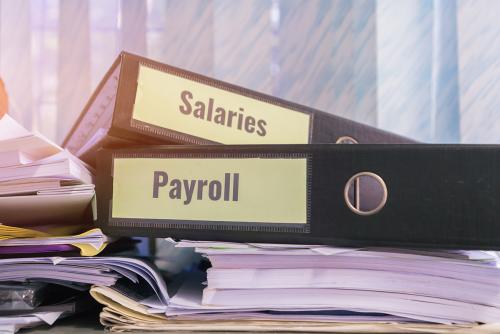Below is a review of the posts (on Facebook, LinkedIn, and Twitter) from the past week. You can check out the full posts by clicking on the links.

In the post on Sunday 9/11/2022 we learned the Secret Service recovers $286M in stolen pandemic loans. First, in case the link was broken when you tried it, here is another: http://ow.ly/zwUj50KMcVs . The U.S. Secret Service is returning the recovered funds to the Small Business Administration. An investigation initiated by the Secret Service’s Orlando office found that alleged conspirators submitted EIDL applications using fake or stolen employment and personal information and used an online bank, Green Dot, to conceal and move their criminal proceeds. Then the agency worked with Green Dot to identify many accounts (how many? See the post) and seize $286 million connected to those accounts. Billions (yes, with a “B”) have been fraudulently claimed through various pandemic relief programs — including PPP loans, unemployment insurance and others rolled out in the midst of the pandemic that shut down global economies for months. A March GAO report talked about the various programs and the sword and shield they represented; see the post for what GAO said. As a result, GAO has recommended several measures for agencies to prevent pandemic program fraud in the future (including one noted in the post). Since 2020, the Secret Service initiated more than 3,850 pandemic related fraud investigations, seized over $1.4 billion in fraudulently obtained funds and helped to return $2.3 billion to state unemployment insurance programs. The latest seizure included a collaboration of efforts between Secret Service, the SBA’s Inspector General, DOJ and other offices. Hannibal “Mike” Ware, the SBA’s inspector general, said the joint investigations will continue for the purpose noted in the post.
TAKEAWAY: Some monies that should never have gone out of the public pocketbook have been recovered and returned – for future redistribution to the needy.

The post on Monday 9/12/2022 told us a nurse says CVS fired her over abortion stance, files lawsuit in VA. Paige Casey was a nurse practitioner at a CVS in Northern Virginia. For years CVS had granted her a religious accommodation that allowed her to opt out of prescribing or providing abortion-inducing or contraceptive drugs. But she says that last year CVS changed it policies and ceased the accommodation. Casey appealed on the basis noted in the post. The suit alleges that the firing had interesting timing – see the post. Casey’s lawyer said that state law prohibits employers from taking disciplinary action against employees who object to abortion on moral or religious grounds. And CVS’s position on what it asserts is a proper basis for the termination? See the post.
TAKEAWAY: make sure you know applicable law before taking adverse action against an employee asserted a potentially protected basis for something – consult an employment lawyer too.

The post on Tuesday 9/13/2022 showed us that Safelite AutoGlass is sued for sex discrimination. Safelite is the largest auto glass repair and replacement business in the US. The EEOC has now sued, alleging Safelite violated Title VII on the basis of sex discrimination. The suit alleges that a woman applied for an auto glass tech-nician trainee position and that during the interview, she told the manager that she had 2 years’ experience as a repair technician (including lifting and moving heavy objects). The manager then expressed doubt about some of her qualifications and potential job fit – see the post for more. She did not get a job offer or further contact, but SafeLite hired 2 male technician trainees within a short time after her interview. How the males compared to the female applicant is noted in the post. The suit was filed after the administrative process (including conciliation) failed and seeks both monetary relief and the other things noted in the post.
TAKEAWAY: We will say it again and again: treat all employees and applicants the same regardless of gender/sex. Period. Unless you can truly prove that it is job-related.

The post on Wednesday 9/14/2022 was about the condo and HOA home front – president wears too many hats, has too much authority, and other problems. The issues in this post may seem common to many based on experiences in their own associations. In one the president felt overwhelmed with her duties and thought an on-site manager was needed. Sounds good, right? Yes, except the Minutes from the next Board meeting showed the hiring of the president as the on-site manager! (Yeah – details are in the post.) Since then almost every vendor has been replaced by her in that new role. Why this arrangement is SO BAD is in the post. And then there are the presidents who closed amenities for an indefinite period of time and hired a management company without following policy/procedure. How should those decisions play out? See the post for an explanation.
TAKEAWAY: Know who has authority for what actions in your association – and consult a community association lawyer to be sure.

In the post on Thursday 9/15/2022 we learned that neighbor complaint letters to condo/HOA are (probably) not confidential. That’s right; if you make a complaint to your condo or homeowner’s association about something another owner or resident is (not) doing, that neighbor might be able to see the complaint. Or if the tables are turned, you might be able to see a complaint about you that a neighbor sent in to the association. Why might these complaints be available and not held as confidential? See the explanation in the post.
TAKEAWAY: Know what Pennsylvania law and your association’s governing documents provide about records inspection (by whom, what, and when) – and get advice from a community association lawyer.

The post on Friday 9/16/2022 taught us about on-demand pay: employees love it, but tax implications linger for employers. We know from research that more than 60% of US workers would like access to their earnings before their regularly scheduled paydays. As a result, many employers and the payroll providers now offer on-demand pay arrangements that allow employees to get their wages the same day earned. This can be a double-edged sword for employers, so read on. The new “on-demand pay” is essentially a new payday lending alternative. The differences between on-demand pay and payday loans are noted in the post. Ok, so now we know about the ease of access to wages, but that is the exact thing that could trigger tax obligations due to the Internal Revenue Code’s “constructive receipt” doctrine (which is described in the post). What that means in this context is that if on-demand pay is considered paid the day employees request that employers pay them, employers may not be meeting their deposit obligations or properly calculating withholdings if they continue to perform these tasks weekly, bi-weekly, etc. So how are some employers and payroll providers dealing with that (potential) issue? See the post. But even then one cannot be sure that the IRS will be satisfied under the constructive receipt doctrine. The U.S. Department of the Treasury’s March 2022 “Greenbook” outlining revenue proposals for Fiscal Year 2023 noted that employees with access to on-demand pay may be in constant constructive receipt of their earned wages and described the actions employers should take (as listed in the post) to avoid being considered in violation. With all of this as background, Treasury has urged Congress to enact legislation to ease the administrative complexity. What it proposed (with the affected IRC sections) to ensure uniformity is also listed in the post.
TAKEAWAY: Employers are always looking for ways to retain employees: while on-demand pay may be good for that purpose, employers must be sure to satisfy the timing of tax obligations resulting from that arrangement.

Finally, in the post yesterday 9/17/2022, we learned that nine in 10 (90%) of employees vow to continue ‘gig jobs’ until retirement.. You know that the gig economy has grown exponentially worldwide as more and more people have sought alternative sources of income other than, or in addition to, traditional means of working. What do we mean when we say “gig economy”? See the post for a short but accurate defi-nition. A new report from Zety found that about 36% of all US employees are gig workers! According to the report, 52% do it out of necessity, while 48% do it out of choice. A breakdown of more statistics from the report is in the post. But here’s a big one: whether out of necessity or otherwise, 88% of gig workers said they are consi-dering doing gig work until retirement. When you look at the benefits versus the disadvantages of gig work they cite (all listed in the post), it is enlightening. But that is not the end. Gig workers have been and remain the subject of legal disputes, especially as relates to their rights and benefits in the workplace. A majority of gig workers believe that they should have health insurance and other rights/benefits as noted in the survey report and listed in the post. Europe recently drafted new rules to provide gig workers more rights including criteria for a person or entity to be considered an employer.
TAKEAWAY: There has been, and continues to be, a huge push toward proper classification of contractors (gig workers) and employees; knowing the criteria and penalties for misclassification is important, so engage an employment lawyer to help you.

 York, Pennsylvania 17403
York, Pennsylvania 17403